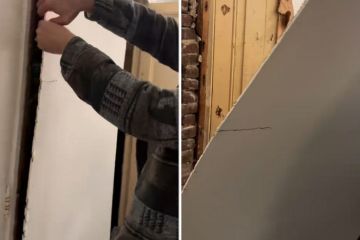Garden mistakes that will cost you

Contemporary Garden by ORBIS design
Author: Naomi Wynn
As the saying goes, there is more than one way to skin a cat and there is more than one way of creating a garden. Thankfully, most plants are pretty forgiving and can tolerate and adapt to lots of situations. But to get the most from your garden and have it looking fantastic all year long and for many years to come, there are some simple garden mistakes to avoid that could well save you time and money. So, here is what not to do in your garden…
Plan a garden design with the help of a landscape professional

1. Planting before considering the water tank
In a dry country such as Australia, water is a resource most areas need to make the most of, especially in the garden. Rainwater tanks help drought-proof gardens and reduce the cost of using only the public water supply. By deciding where you are going to put your tank while designing your garden, you can position the plants in relation to the tank based on their water needs. For example, those plants that are more hardy, such as natives, can be further away from the tank, allowing those with higher water needs, such as the vegie patch, to be closer to the water supply.
Ask yourself these questions before installing a water tank
2. Installing wires and pipes after planting
Lighting in a garden can take it from the modest to the magical and can extend the time you spend in your outdoor room, as you won’t be restricted to enjoying it in only the daylight hours. If you think you might like outdoor lighting at some point, do the ground work before you plant to prevent having to dig up the garden to install the cabling once it is established, or trying to find ways to hide unsightly wires.
There are lots of different irrigation systems on the market and some are installed before planting and some after. Don’t wait till after you have planted your garden to decide which one is the best suited to your needs or you could risk defacing your garden beds. And whether you have a rainwater tank or not, make sure there is a easily accessible tap nearby to plug into.

3. Forgetting about access
Getting around your garden seems simple when you are walking, but you may need to move a wheelbarrow or lawnmower. Steps and narrow paths can make normally easy jobs difficult and take twice as long.While steps are hard to avoid on steeper blocks, make sure they are not at too steep a gradient to negotiate a load and that paths are wide enough to allow a wide load if necessary.
Prioritise your home’s exterior with a new house number or letterbox

4. Selecting the wrong rocks as ground cover
Rocks as a ground cover can be a beautiful and striking feature, but there are few things to remember. During the day when they are in full sun, rocks can get hot and radiate quite a lot of heat(especially in summer), causing plants and the soil to dry out quickly. Larger rocks can also stop plants from growing and expanding. When you choose what sort of rock you are going to use and where you’ll put it, ensure it suits the plants and their growth requirements. Also, because rocks prevent organic matter from easilyreturning to the soil, you may need to fertilise your plants to ensure good health.
Find a contractor that specialises in decks

5. Choosing weed mat
As the name suggests weed mat is used to stop weeds growing in gardens. Despite its common use, however, it rarely does what it is supposed to do and instead starves the soil of organic matter and moisture. For good long-term soil health, there needs to be a cycle of returning organic matter back into the soil to be broken down into a food source for plants. Like rocks, weed mat serves as a barrier to stop the organic matter from getting into the soil. Using a good-quality mulch is a much better alternative and will allow your garden to flourish.
6. Misusing mulch
As far as your garden is concerned, mulch can be worth its weight in gold. The ultimate slow-release fertiliser, good mulch should break down and need to be replaced every few years. There are many different types available and you should make your choice based on the benefits to your garden and soil health as much as its looks and cost. Some mulches may look good but offer no benefits to your soil and, in fact, could be doing your garden damage. Look for a mulch that has a good mix of large and small chunks.
Instead of conventional mulches, living ground covers are a great alternative. Their thick, low growth covers the soil protecting it from weed growth, the sun and eroding rains, and they help retain moisture and return organic matter back into the soil. But if you prefer mulch, and it does these four things, you will have a healthy garden.

7. Getting complacent with fertilising
In a perfect ecosystem there would be no need to fertilise. But in our gardens we need to give our plants a bit of a helping hand once in a while to make sure they look their best and are healthy. Make sure you follow the directions on the packaging, remembering more is not always better, and if you have a native garden, be sure to choose a fertiliser to suit.
We recommend
States
Capital Cities
Capital Cities - Rentals
Popular Areas
Allhomes
More
- © 2025, CoStar Group Inc.







